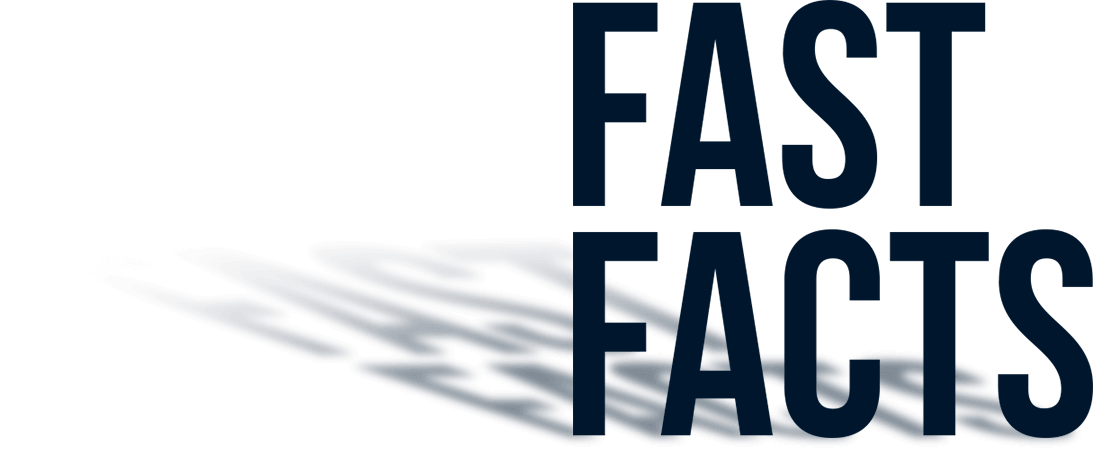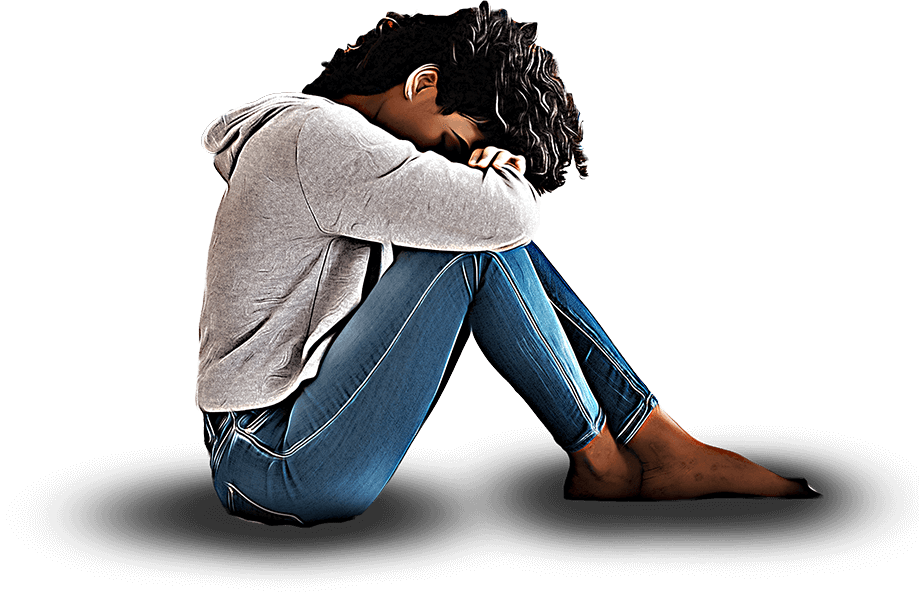
There is not one generally agreed upon definition of child sexual abuse. Broadly speaking, the term “child sexual abuse” encompasses a wide spectrum of sexual acts enacted on people below eighteen years of age.
Sex acts between adults and children constitute child sexual abuse because it is recognized that children, due to their developmental limitations, do not have capacity to give consent.
As defined by the World Health Organization, “Child sexual abuse is the involvement of a child in sexual activity that he or she does not fully comprehend, is unable to give informed consent to, or for which the child is not developmentally prepared and cannot give consent, or that violates the laws or social taboos of society. Child sexual abuse is evidenced by this activity between a child and an adult or another child who by age or development is in a relationship of responsibility, trust or power, the activity being intended to gratify or satisfy the needs of the other person. This may include but is not limited to:
- the inducement or coercion of a child to engage in any unlawful sexual activity
- the exploitative use of a child in prostitution or other unlawful sexual practices
- the exploitative use of children in pornographic performance and materials.”
Child sexual abuse may involve fondling or sexual touch, any kind of intercourse, the production and consumption of child sexual abuse materials (i.e., child pornography) and more. Importantly, child sexual abuse does not always require physical contact between the abuser and the child. For example, showing children pornography, exposing oneself to a minor or convincing the minor to expose themselves in person or over the internet, and exchanging sexually obscene messages are also forms of child sexual abuse.
Sexually abusive actions against children are not only inflicted by adults. Child-on-child harmful sexual behavior frequently involves older juveniles who use their age, physical strength/size, or positions of status or authority, to engage children who are younger or with cognitive impairments in sexual activity. However, harmful sexual behavior may also occur between children of similar age and young children. Exposure to pornography has been identified as a significant contributing factor to children acting in sexually harmful ways toward other children. See our Research Summary on Child-on-Child Harmful Sexual Behavior for more information on this topic.
The National Center on Sexual Exploitation advocates for governmental and corporate policies to better prevent and address the above forms of abuse, with a particular emphasis on the increased use of the Internet for facilitating these crimes.

Please refer to the NCOSE resources page to find information regarding problematic sexual behavior, Internet safety, prevention of pornography exposure, commercial sexual exploitation, and other related topics.
There has been a concerted effort among those working to end child abuse to adopt the term “child sexual abuse materials” (CSAM) as a replacement of the term “child pornography” (see here, here, and here). CSAM more accurately reflects the reality that “child pornography” is photographic or video evidence of a child being sexually abused, instead of framing it as “pornography” which obscures the fact that such material is evidence of child sexual abuse.
While there is not one standard agreed-upon definition, broadly speaking, the term “child sexual abuse” encompasses a wide spectrum of sexual acts enacted on people below eighteen years of age.
As defined by the World Health Organization:
“Child sexual abuse is the involvement of a child in sexual activity that he or she does not fully comprehend, is unable to give informed consent to, or for which the child is not developmentally prepared and cannot give consent, or that violates the laws or social taboos of society. Child sexual abuse is evidenced by this activity between a child and an adult or another child who by age or development is in a relationship of responsibility, trust or power, the activity being intended to gratify or satisfy the needs of the other person. This may include but is not limited to:
- the inducement or coercion of a child to engage in any unlawful sexual activity
- the exploitative use of a child in prostitution or other unlawful sexual practices
- the exploitative use of children in pornographic performance and materials.”
Child sexual abuse may involve fondling or sexual touch, any kind of intercourse, the production and consumption of child sexual abuse materials (sometimes called “child pornography”) and more. Importantly, child sexual abuse does not always require physical contact between the abuser and the child. For example, non-physical acts like exhibitionism, exposure to pornography, taking pictures or video of a child for sexual gratification, solicitation of a child for prostitution, voyeurism, or communication in a sexual way by phone, Internet, or face-to-face are all forms of child sexual abuse.
What isn’t considered as often when considering solutions for combating child sexual abuse is how sexually abusive actions against children are not only inflicted by adults. Child-on-child harmful sexual behavior frequently involves older juveniles who use their age, physical strength/size, or positions of status or authority, to engage children who are younger or with cognitive impairments in sexual activity. However, harmful sexual behavior may also occur between children of similar age and young children. Exposure to pornography has been identified as a significant contributing factor to children acting in sexually harmful ways toward other children. See our Research Summary on Child-on-Child Harmful Sexual Behavior for more information on this topic.
Child sexual exploitation is a form of child sexual abuse. The key factor distinguishing child sexual exploitation from other forms of child sexual abuse is the involvement of the exchange of something of value. The exchange may occur in two ways: 1) something needed or wanted by the child (e.g., money, clothing, drugs, protection, perceived receipt of love, etc.) is exchanged to entice them into sexual activity, and/or 2) the perpetrator or facilitator gains financial advantage or enhanced status from the abuse. In cases where sexual gratification or exercise of power and control is the only gain for the perpetrator, and there is no exchange with the child the abuse does not constitute child sexual exploitation but is a different form of child sexual abuse.
Common forms of child sexual exploitation include use of children in prostitution and the production of pornographic materials.
Importantly, child sexual exploitation can occur to children who can legally consent to sex based on age of consent laws, includes contact and non-contact offenses, and can take place in person or via technology, or a combination of both. For more information on child sexual exploitation see: Child Sexual Exploitation Definition and Guide for Professionals.
While experts may never know the true number of child sexual abuse victims, the National Association of Adult Survivors of Child Abuse claims there are more than 42 million survivors of sexual abuse in the United States alone. RAINN calls child sexual abuse a “widespread problem,” and their research has shown that child protective services substantiate or find evidence for claims of abuse every 9 minutes. Reports found evidence of up to 57,329 children were victims of sexual abuse in 2016 alone. The problem has only escalated in recent years due to the significant increase of children participating in the online world, filled with dangers like anonymous predators and violent pornography. In fact, the Internet Watch Foundation called 2021 the “worst year on record” for online child sexual abuse.
Research has repeatedly shown that child sexual abuse can have a very serious impact on physical and mental health, as well as later sexual adjustment. Depending on the severity of and number of traumas experienced, child sexual abuse can have wide-reaching and long-lasting effects.
Children who have experienced abuse are more likely than non-victims to experience the following mental health challenges:
- About four times more likely to develop symptoms of drug abuse
- About four times more likely to experience PTSD as adults
- About three times more likely to experience a major depressive episode as adults
Terms like “child prostitution” or “underage prostitution” use the pejorative label “prostitute” and obscure the fact that the involvement of children in prostitution is a form of child sexual exploitation. Children cannot consent to participation in commercial sex acts. As defined by the U.S. Trafficking Victims Protection Act (TVPA), anyone under the age of 18 who is engaged in commercial sex is by definition a sex trafficking victim irrespective of use of force, fraud, or coercion. You can learn more about sex trafficking here.
Pornography Used as a “Training” Tool to Groom Kids
Perpetrators of child sexual abuse, especially those that find and groom victims online, often use pornography as a way to further manipulate and control the child. The typical grooming process is all about establishing trust between the perpetrator (who could be pretending to be a younger, similar age to the child or not) and the potential victim. Once that trust has been established, many perpetrators will then escalate conversations by introducing sexual topics. One internet safety organization explains:
“After the child’s trust develops, the groomer may use sexually explicit conversations to test boundaries and exploit a child’s natural curiosity about sex. Predators often use pornography and child pornography to lower a child’s inhibitions and use their adult status to influence and control a child’s behavior.”
The use of pornography, in particular CSAM (child sexual abuse materials, sometimes known as “child pornography”) is often a key “training” tool in order to normalize the sexual aspects of the relationship and prepare the child to participate in acts they may not have otherwise. A prominent expert on child abuse and neglect wrote, “Children who see peers engaging in sex and apparently enjoying it may be more likely to comply with the molester’s demands.”
Perpetrators can even use CSAM to groom and recruit children into participating in the creation of new material, which can then be sold and distributed. The existence of such material may also provide further leverage for the perpetrator to exploit and manipulate the child into more behavior and sex acts, in what is sometimes called “sextortion.”
CSAM is Rampant Online
Reports of child sexual abuse materials (CSAM) have grown exponentially in recent years, with 3,000 reports in 1998 growing to more than 1 million in 2014 and 18.4 million in 2019. The New York Times called it an “almost unfathomable” increase in criminal behavior. Viewing, possessing, and distributing CSAM is a federal crime and constitutes as child sexual abuse.
Mainstream pornography, peddled by tube sites such as Pornhub (which currently faces 6 lawsuits and counting for hosting and profiting from the filmed rape and abuse of both adult women and children) is rife with child sexual abuse material (CSAM), rape, racism, and myriad other forms of exploitative and criminal material. Teen and child “themed” pornography, even if it features adult actors, normalizes child sexual abuse to an extreme. Pornography has become, tragically, a “key social institution” for developing “norms” of sexual conduct, leading some individuals to act out on children or seek out CSAM. This is especially evident when looking at cases of harmful child on child sexual behavior – many children who are exposed to pornography go on to act out what they’ve seen on other kids.
Those using online pornography are very likely using CSAM images as they are intermingled in nearly all websites hosting sexually explicit material (e.g. Twitter, OnlyFans, Pornhub, Google Images, and more).
Pornography Users Sometimes Seek to Act Out
Research has demonstrated that pornography use can have a profound impact on an individual’s own sexual behavior and attitude. A meta-analysis of 46 studies reported that the effects of exposure to pornographic material are “clear and consistent,” and that pornography use puts people at increased risk for committing sexual offenses and accepting rape myths. Pornography has also been linked to:
- Male sexual aggression against women (effects being more pronounced among men who are predisposed to sexual aggression, who consume pornography with higher frequency, or who use violent pornography, see here)
- Physical and verbal aggression among both male and female pornography consumers
- Greater likelihood of adolescents sexually harassing a peer (see also here)
- Adolescents perpetrating coercive and forced sexual behavior (i.e. child-on-child harmful sexual behavior (see also here)
- Physical and sexual victimization of adolescents
- Purchase of sex (see also here)
Pornography use has also shown symptoms similar to those with substance addiction, including the process of desensitization—meaning users need more extreme content over time in order achieve the same level of arousal.
The normalization of prostitution has created a significant threat for increased child sexual abuse. As pimps and sex traffickers seek to fill the demand created by sex buyers, they often seek vulnerable children to pull into the commercial sex trade.
Increasingly, children are targeted and groomed by these predators online, lured into false relationships or extorted through the sharing of sexually explicit images. This is happening right in plain sight on social media apps like Instagram and Discord.
Prostitution websites like Seeking Arrangement and OnlyFans prey upon and encourage young women to open accounts to sell access to their bodies for public consumption. When one young social media star and rapper turned 18 years old, she broke the OnlyFans record for making $1 million in her first 6 hours on the platform – only a few days after the birthday that declared her “legal.” NCOSE has heard reports of users creating accounts on OnlyFans despite being under-age, and evidence of trafficking has been documented on the platform. The popularity of such a site and the abundance of very young women and children fuels the demand for male access to women and children’s bodies, and quietly sanctions the sexualization and profit of child sexual abuse material.
Many other organizations do excellent work addressing offline child sexual abuse and exploitation, and while we do some work on those forms of abuse (for example child sex trafficking), they are not our primary focus. NCOSE emphasizes online child sexual abuse and exploitation because the Internet has removed previous barriers to abuse, and both legal and corporate policies have not yet caught up to adequately safeguard children online.
Our work is dedicated to exposing these societal connections that can lead to severe problems like child sexual abuse. This work includes advocating for corporations—including social media platforms—to change their policies to better protect children online and dismantling the pillars of infrastructure which support the exploitative pornography industry.
The Dirty Dozen List is an annual campaign that lists 12 mainstream corporations which have facilitated or profited from sexual exploitation, and we’ve seen significant victories that have improved child safety online and made it harder for predators to access potential victims. We’re also advocating for institutions—like summer camps and churches, among others—to do more to prevent abuse from happening within their systems by implementing robust training and protection policies.
National proposed legislation like the EARN IT Act would also help curb perpetration by creating incentives for corporations to prioritize child safety and stem the seemingly-endless tide of child sexual abuse material that has been overrunning the Internet.
It’s also critical to acknowledge that true prevention cannot happen without services and rehabilitation for those who have committed child sexual abuse.
- The Association for Treatment of Abusers, or ATSA, promotes sound research, effective evidence-based practice, informed public policy, and collaborative community strategies that lead to the effective assessment, treatment, and management of individuals who have sexually abused or are at risk to abuse.
- Stop It Now is an anti-child abuse organization that also provides some resources and hope for perpetrators.
- The Child Molestation and Research and Prevention Institute provides a national directory available online of sex-specific therapists offering evaluation and treatment of adults and youth.
- For children that have perpetrated sexual abuse, there are child therapists and child advocacy centers (CACs are found all across the US) that are equipped to work through solutions and lower the risk of re-offense later in life.
The problem of child sexual abuse is serious and pervasive, but it is not hopeless.
By flipping the script and addressing the factors that influence the demand for child sexual abuse, we can begin to not only treat the victims but also prevent countless future ones. It’s time for each of us to join the movement that is creating a world that is truly free from all forms of sexual abuse and exploitation.
Take Action
Lawsuit Against Twitter
Safe Schools, Safe Libraries
Check Your Local School’s Online Databases
Share Your Story


17 Minutes
18.4m
89%
Further Reading
Child on Child Harmful Sexual Behavior Part 1: A 3-Step Path
Defend Young Minds - Back-to-School Online Safety
Talk Today, Safer Tomorrow
Safe Schools, Safe Libraries
Pornography and Its Impact on Adolescence
How the Average Kid Gets Sex Trafficked: Top 6 Ways to Protect Them
Tip Sheet: Warning Signs of Possible Sexual Abuse In A Child's Behaviors
Research Summary: Child-on-Child Harmful Sexual Behavior
Child on Child Harmful Sexual Behavior Part 1: A 3-Step Path
Defend Young Minds - Back-to-School Online Safety
Talk Today, Safer Tomorrow
Safe Schools, Safe Libraries
Pornography and Its Impact on Adolescence
How the Average Kid Gets Sex Trafficked: Top 6 Ways to Protect Them
Tip Sheet: Warning Signs of Possible Sexual Abuse In A Child's Behaviors
Research Summary: Child-on-Child Harmful Sexual Behavior
Child on Child Harmful Sexual Behavior Part 1: A 3-Step Path
Defend Young Minds - Back-to-School Online Safety
Talk Today, Safer Tomorrow
Safe Schools, Safe Libraries
Pornography and Its Impact on Adolescence
Defend Young Minds - Back-to-School Online Safety
Talk Today, Safer Tomorrow
Safe Schools, Safe Libraries
Pornography and Its Impact on Adolescence
Tip Sheet: Warning Signs of Possible Sexual Abuse In A Child's Behaviors
Research Summary: Child-on-Child Harmful Sexual Behavior
Child on Child Harmful Sexual Behavior Part 1: A 3-Step Path
Defend Young Minds - Back-to-School Online Safety
Talk Today, Safer Tomorrow
Safe Schools, Safe Libraries
Pornography and Its Impact on Adolescence
Tip Sheet: Warning Signs of Possible Sexual Abuse In A Child's Behaviors
Research Summary: Child-on-Child Harmful Sexual Behavior
Child on Child Harmful Sexual Behavior Part 1: A 3-Step Path
Defend Young Minds - Back-to-School Online Safety
Talk Today, Safer Tomorrow
Safe Schools, Safe Libraries
Pornography and Its Impact on Adolescence
Research
Video Resources
Subscribe to our YouTube channel for the latest webinars, presentations from experts, video podcasts, and more!
Audio Resources
Subscribe to the Ending Sexploitation Podcast today!
The Ending Sexploitation podcast decodes sexual harms and provides you with active solutions. We address the full spectrum of sexual exploitation, from sex trafficking to sexual violence, to rape culture, to pornography, and more. And better yet, we give you the tools to make a difference!

